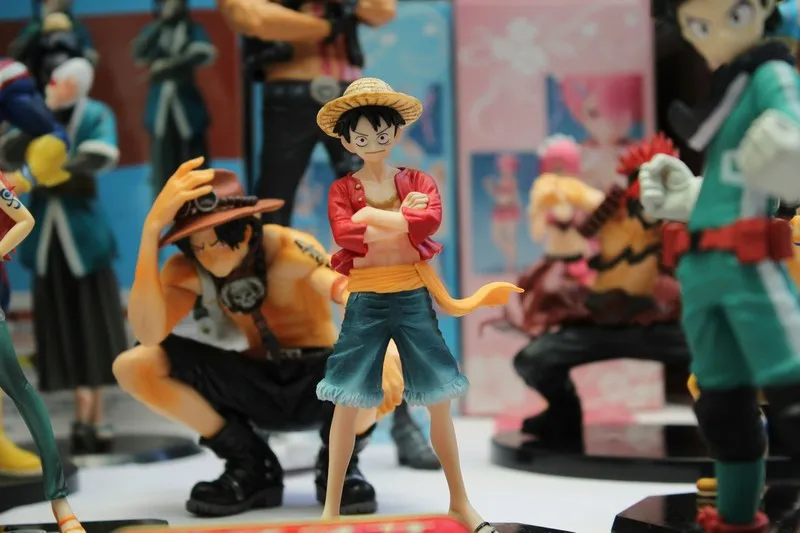Table of Contents
- The Concept of Nakama: Friendship and Loyalty
- Diversity and Inclusivity in the Straw Hat Crew
- The Quest for Social Justice
- The Impact of Globalization
- The Role of Myth and Legend
- Gender Roles and Representation
- Fan Culture and Community
- Conclusion
“One Piece” is a Japanese manga series written and illustrated by Eiichiro Oda. First serialized in Shueisha’s “Weekly Shōnen Jump” magazine in 1997, the story follows Monkey D. Luffy, a young man whose body gains the properties of rubber after unintentionally eating a Devil Fruit. Luffy explores the Grand Line with his diverse crew of pirates, known as the Straw Hat Pirates, in search of the world’s ultimate treasure, known as “One Piece,” to become the next Pirate King. While its primary appeal lies in its adventurous and fantastical narrative, “One Piece” holds substantial cultural value that extends beyond mere entertainment. This article explores the series’ cultural significance from a sociological perspective, examining themes of friendship, diversity, social justice, and globalization.
The Concept of Nakama: Friendship and Loyalty
Central to “One Piece” is the concept of “nakama,” a Japanese term that translates loosely to companions or comrades. This concept is pivotal in understanding the cultural fabric of the series. Nakama goes beyond mere friendship, encompassing a deep bond of loyalty and mutual support. Sociologically, this reflects the Japanese cultural emphasis on group cohesion and interdependence. In “One Piece,” the Straw Hat Pirates’ unwavering loyalty to one another exemplifies this principle, portraying an idealized form of social solidarity that resonates with audiences globally.
The portrayal of nakama in “One Piece” can be seen as a microcosm of societal values. In many ways, it mirrors the ideal social structure where individuals work together harmoniously towards common goals. This theme is particularly significant in a global context where individualism often overshadows collectivist values. By highlighting the strength and resilience derived from unity, “One Piece” subtly advocates for a more interconnected and supportive social framework.
Diversity and Inclusivity in the Straw Hat Crew
The Straw Hat Pirates’ composition is notable for its diversity, featuring characters of various backgrounds, races, and species. This inclusivity is not just a narrative choice but a reflection of a broader cultural message. Sociologically, the diverse crew can be interpreted as a commentary on multiculturalism and the importance of embracing differences. Each member’s unique abilities and perspectives contribute to the crew’s success, underscoring the value of diversity in achieving collective goals.
In contemporary society, where issues of race, ethnicity, and inclusivity are increasingly prominent, “One Piece” provides a narrative that celebrates diversity. The series challenges traditional stereotypes and promotes a vision of a world where differences are not just tolerated but valued. This aligns with the sociological understanding of diversity as a strength rather than a weakness, advocating for social structures that are inclusive and equitable.
The Quest for Social Justice
One Piece” frequently addresses themes of social justice, challenging various forms of oppression and inequality. Throughout their journey, the Straw Hat Pirates encounter numerous instances of systemic injustice, from corrupt governments to oppressive social hierarchies. Luffy and his crew often find themselves in the role of liberators, fighting against these injustices and advocating for the rights and freedoms of marginalized groups.
This recurring motif of social justice in “One Piece” mirrors real-world sociopolitical struggles. The series serves as an allegory for the fight against systemic oppression, resonating with audiences who are familiar with these issues in their own societies. By framing these struggles within a fantastical narrative, “One Piece” encourages viewers to reflect on their own social realities and consider their roles in advocating for justice and equality.
The Impact of Globalization
“One Piece” is a global phenomenon, with its cultural impact extending far beyond Japan. The series has been translated into numerous languages and has a vast international fan base. This global reach underscores the power of media in shaping cultural perceptions and fostering cross-cultural understanding. From a sociological perspective, “One Piece” illustrates the dynamics of globalization, where cultural products transcend national boundaries and influence diverse populations.
The international popularity of “One Piece” also highlights the concept of cultural hybridity. The series blends elements of traditional Japanese culture with global influences, creating a narrative that appeals to a wide audience. This hybridity reflects the fluid and interconnected nature of contemporary cultural identities, challenging the notion of fixed or monolithic cultures. Through its global success, “One Piece” demonstrates the potential for media to bridge cultural divides and promote a more inclusive and interconnected world.
The Role of Myth and Legend
Get the full article AD FREE. Join now for full access to all premium articles.
View Plans & Subscribe Already a member? Log in.





